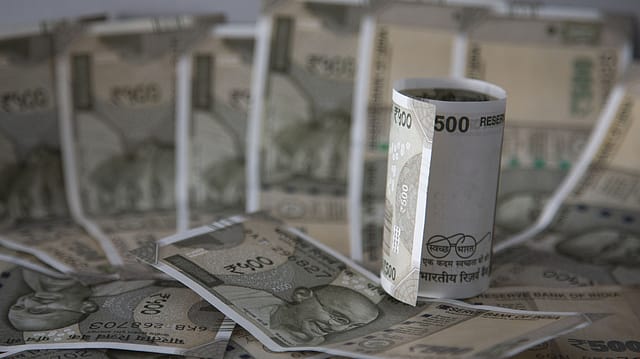India Inc's ₹3.38 lakh cr interest burden is up 30% since Covid
ADVERTISEMENT

Spiking interest rates leading to higher rates on home loans, personal loans, and auto loans are a cause of financial distress to Indian households. But soon higher rates will pinch India Inc. too. As per a recently released research report by India Ratings and Research (Ind-Ra), the interest burden on Indian companies could surpass pre-Covid levels in terms of value, increasing 30% in FY24 compared to FY22.
A sharp rise in interest rates and higher working capital financing is likely to increase interest outflows to ₹3.38 lakh crore in FY24 from ₹2.52 lakh crore in FY22, states the Ind-Ra report. While comparing FY22 and FY24, the cost of debt is likely to increase across all categories irrespective of the size of the companies.
India Ratings has analysed the interest costs on a net basis of around 3,365 non-financial, debt-heavy corporates with a total debt of about ₹36 lakh crore as of the first half of FY23. The Reserve Bank of India has increased the repo rate to 6.5% from 4% between March 2022 and April 2023, whereas banks' Marginal Cost of Funds based Lending Rate (on an average) for outstanding loans has increased to 9.67% from 8.72%. MCLR is the minimum lending rate below which a bank is not permitted to lend.
January 2026
Netflix, which has been in India for a decade, has successfully struck a balance between high-class premium content and pricing that attracts a range of customers. Find out how the U.S. streaming giant evolved in India, plus an exclusive interview with CEO Ted Sarandos. Also read about the Best Investments for 2026, and how rising growth and easing inflation will come in handy for finance minister Nirmala Sitharaman as she prepares Budget 2026.
Interest rate transmission for large corporates gained traction in the second half of FY23, amid the repo rate hike, owing to the sharp deterioration in the banking system liquidity. The agency opines that the transmission of monetary policy in the banking system could intensify in FY24, driven by the sharp rise in banks' MCLR.
Interest cost has increased for all sectors and on average, a CAGR growth of 16% will be seen across sectors led by chemicals, crude oil, iron and steel, and infrastructure between FY22 and FY24. For the top debt-heavy sectors, interest costs will rise to ₹2.84 lakh crore in FY24 from ₹2.09 lakh crore in FY22, the report mentioned.
Comparing data on a quarter-on-quarter basis, the agency noted that the interest coverage ratio has decreased for most sectors amid lower operating margin and higher interest expenses barring infrastructure, non-ferrous metals, realty, and construction. Interest coverage ratio is a financial metric that measures whether companies can pay their outstanding debts. It is calculated by dividing Earnings Before Interest and Taxes (EBIT) by the Total Amount of Interest Expense. The general rule is that the higher the ratio, the better position a company is in to repay its interest obligations. Lower ratios point to financial instability.
The drawdown from the Reverse Repo in FY23 to the tune of ₹5 lakh crore till FY23 has enabled banks to address a surge in the gap between incremental credit and deposit which will not be available in FY24. Therefore, even if the policy rate remains stable for FY24, rates in the banking system will continue to face upward pressure, the India Ratings and Research Report mentioned.
